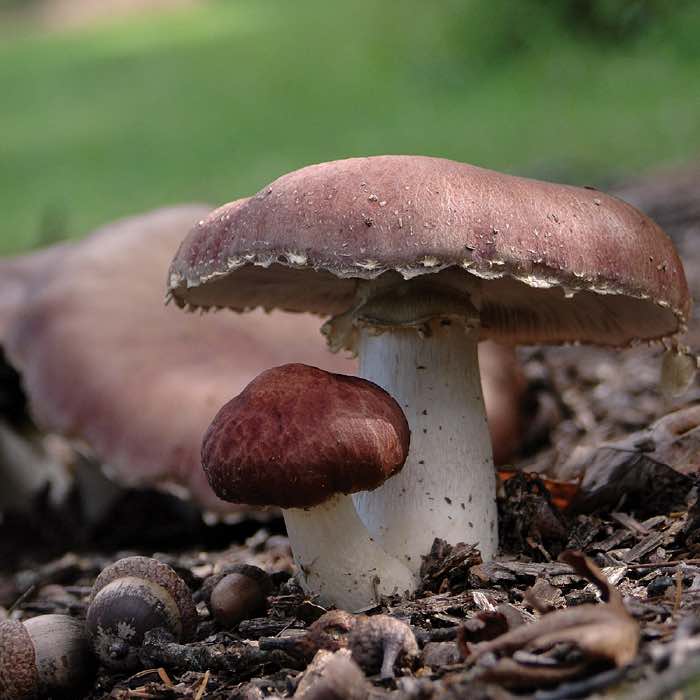Winecap mushrooms grow on woodchips!
Wine Cap features a white stalk with a port wine colored cap. These crisp, slightly nutty flavored mushrooms are great for braising, sauteing, grilling and pickling. Besides being a choice edible, Wine Cap is also a natural soil builder, weed suppressor and attractive landscape ornamental. They can quickly be grown as an annual on straw, or as a short lived perennial if planted on a denser woody substrate such as wood chips. Wine Cap can fruit throughout the growing season, especially after a heavy rainfall or change in temperature. Beds can often produce more than you can eat!

quickly converting large thick mats of organic material high in carbon to a rich layer of organic matter and humus. Wine cap can digest most wood chip types within several seasons, allowing chipped wood to not only return to the soil, but also enrich it.
https://www.ncbi.nlm.nih.gov/pmc/articles/PMC9107548/
Stropharia rugosoannulata Farl. ex Murrill, commonly known as the wine-cap Stropharia mushroom or king Stropharia, is a gorgeous mushroom with excellent taste and nutritional qualities, and it is widely distributed in northern temperature zones (Szudyga 1978; Yan and Jiang 2005). It is also a medicinal fungus with antitumor (Dai et al. 2009; Wang et al. 2018), antibacterial, antioxidant, antifatigue and blood glucose-lowering properties (Song et al. 2009; Yan and Xu 2018; Wu et al. 2019). S. rugosoannulata cultivation mainly uses various agricultural and forestry wastes, such as straw, tree branches and substrates of other edible fungi after cultivation (Yang et al. 2020). S. rugosoannulata was first domesticated in Germany in the 1960s, and it was recommended by the Food and Agriculture and Organization (FAO) as a cultivated mushroom for developing countries (Szudyga, 1978; de Oliveira et al., 2020, Yang et al. 2020).
This study provides a theoretical basis for the study of the carbohydrate metabolism and cold resistance mechanisms in S. rugosoannulata.

No comments:
Post a Comment